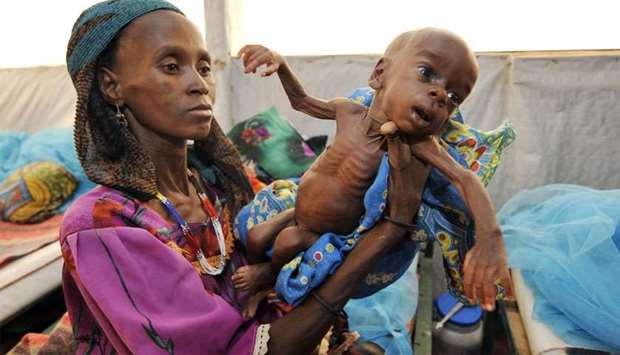Some 821 million people - one in nine of the world's population - did not have enough food to eat in 2017, UN agencies said on Tuesday, in a report decrying increasing global hunger rates.
According to the report, entitled The State of Food Security and Nutrition in the World, ‘world hunger has been on the rise over the past three years, returning to levels from a decade ago.’ ‘Undernourishment and severe food insecurity appear to be increasing in almost all subregions of Africa, as well as in South America, whereas the undernourishment situation is stable in most regions of Asia,’ it warned.
Eastern Africa, which includes conflict-ridden nations like Eritrea and South Sudan, was singled out as the worst affected region, with 31.4 per cent of its people classified as undernourished.
The annual report is a joint effort of UNICEF, the World Health Organization, the Food and Agriculture Organization (FAO), the International Fund for Agricultural Development (IFAD) and the World Food Programme (WHO).
The UN agencies first noticed an uptick in hunger numbers last year.
Conflicts, economic downturns and natural disasters are to blame for the negative trend, the agencies said, expressing concern that a UN development target of achieving Zero hunger by 2030 was being put at risk.
‘The number of extreme climate-related disasters, including extreme heat, droughts, floods and storms, has doubled since the early 1990s,’ the latest UN hunger report noted.
It found that 151 million children under five - 22 per cent of the world's total - were stunted, meaning they are too short for their age; while 672 million people - 13 per cent of the adult population - were obese.
Falling hunger rates have until recently been a major success story, largely thanks to rapid economic development in Asia. In 2015, the UN hailed the fact that more than 200 million people had been freed from hunger since 1990.

